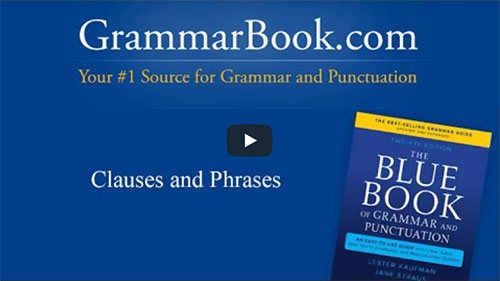|
Many of us will write for different reasons, such as to convey information, enjoy and maintain relationships, or journal our distinctive experience perceiving the people, places, and things that we see. Some of us also write from a desire to explain or create.
Beyond applying good grammar, one's writing can develop its own texture and voice with techniques that add pacing and emphasis. With that in mind, let's discuss periodic sentences: what they are and how to use them.
What Is a Periodic Sentence?
We'll begin our review of periodic sentences by first looking at how they differ from loose sentences.
A loose sentence starts with the main idea and then follows it with any details we wish to add for imagery and clarity.
Examples
People attend sporting events because they like being entertained by competition.
I made my way to the top of the mountain to view the valley below in all of its breathtaking splendor. |
You can see how each sentence leads with the main thought and then provides extra description. If we omit the additional details, or if a reader glosses over them, the primary information we want conveyed will be intact, even if it lacks enhancing zest and insight. In this way, loose sentences can be easily located, scanned, and mentally processed.
A periodic sentence creates an opposite structure by placing the main thought at the end of the sentence instead of at the front of it.
Examples
Because they like being entertained by competition, people attend sporting events.
To view the valley below in all of its breathtaking splendor, I made my way to the top of the mountain. |
To reach the core thought, we have to read all the way to the end—i.e., to the period (periodic).
Both loose and periodic sentences are complex sentences, meaning they contain an independent clause and at least one dependent clause.
What a Periodic Sentence Achieves
By delaying the most important information, periodic sentences further underscore the central idea, often creating emphasis, suspense, or surprise.
| When I stepped into the dim room and threw aside the hanging sheet, I stood before what I had feared. |
Compare that treatment with a loose-sentence structure:
| I stood before what I had feared, when I stepped into the dim room and threw aside the hanging sheet. |
Let's look at another example of how a periodic sentence can achieve an effect through delay:
| The chosen leader, with a mind of steel and a heart of gold, will lead the captives out of their bondage. |
In this case, we take liberty with periodic-sentence structure by starting with the subject, interrupting the action with a prepositional phrase, and then finishing with the complete predicate. The sentence also can be written—and the action delayed—by beginning with the modifying element, as we've been discussing:
| With a mind of steel and a heart of gold, the chosen leader will lead the captives out of their bondage. |
Periodic sentences further can gain persuasion by presenting reasoning or evidence first:
| By admitting you were near the city that day, you contradict your alibi. |
Once again, let's compare the periodic version against a loose sentence:
| You contradict your alibi, by admitting you were near the city that day. |
Because they postpone the central idea, periodic sentences appear more often in formal writing than in everyday speech, which tends to favor simple declarative sentences.
Periodic sentence: By admitting you were near the city that day, you contradict your alibi.
Simple declarative sentences: You admit you were near the city that day. You're contradicting your alibi. |
While they can add style and effect to formal writing, as with any tool or technique, periodic sentences should be used with proper restraint. Relying on them or grouping too many together can draw attention to writing and start to sound redundant and stilted.
Example
Beginning to skate when only five, Natasha gained comfort on the ice. Noticing her daughter's passion, her mother signed her up for lessons with a well-known local instructor. Spotting her talent right away, Natasha's trainer patiently guided her to each next level of skill. With so much focus, love, and support behind her, Natasha would become a pro ice skater soon after her seventeenth birthday. |
While not necessarily a poorly written paragraph, it does begin to build a monotony that would benefit from revision. Let's apply some:
| Natasha gained comfort on the ice by beginning to skate when only five. Noticing her daughter's passion, her mother signed her up for lessons with a well-known local instructor. Natasha's trainer spotted her talent right away and patiently guided her to each next level of skill. With so much focus, love, and support behind her, Natasha would become a pro ice skater soon after her seventeenth birthday. |
In this case, adjusting some periodic structures to loose ones achieves nimble variation with less potential to divert the reader's attention.
Now that you understand what periodic sentences are and how you can use them, you can apply them with proper balance and effect in your writing.
|




